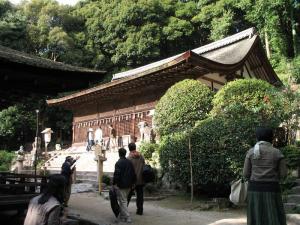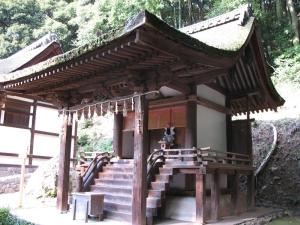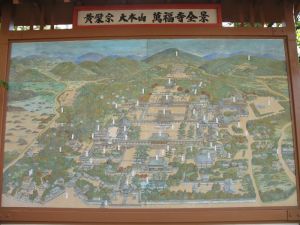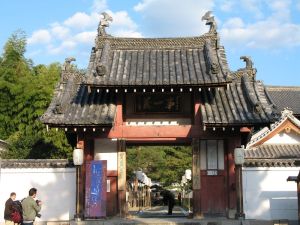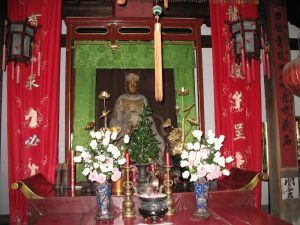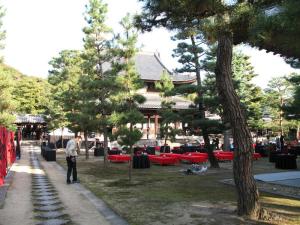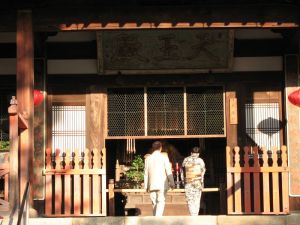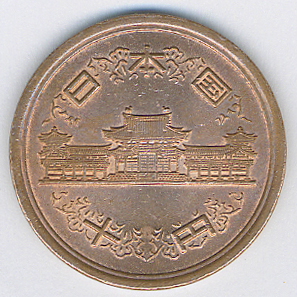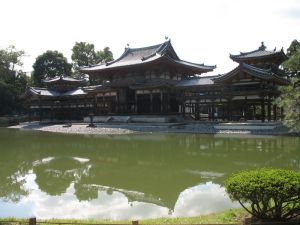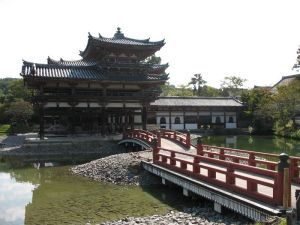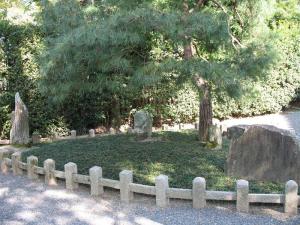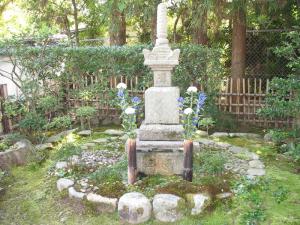From Byōdō-in, I crossed the Uji River and made a brief stop at Ujigami Shrine. It’s small and there isn’t much to see, but Ujigami has the oldest shrine buildings in Japan. Inside this shelter are three shrines that have been dated through dendrochronology to around the year 1060.
They look a bit like this secondary shrine.
Of course in terms of its date of foundation, Ujigami Shrine isn’t even close to being the oldest shrine in Japan, it just has the longest standing buildings. I think no one knows which shrine is the oldest, institutionally speaking, since the really old ones were built before writing was imported from China.
After dropping by Ujigami Shrine, I headed back to the train station and took a train a few stops north to Mampuku-ji, my last site for the day.
Mampuku-ji is the head temple of the Ōbaku branch of Zen. It was founded in 1661 by a Chinese monk, and the Ming Chinese influence is readily visible.
Not so much at the front gate . . .
. . . but this alcove, for example, screams “Chinese.”
My visit was a bit rushed, because the temple was closing early. The reason was that Mampuku-ji was the 2007 host for the annual “Nippon to Asobō” event. I hadn’t heard of it before, but Nippon to Asobō (“Let’s Play with Japan”) is a night of art and entertainment with the aim of celebrating Kyoto and keeping traditional Japanese art and culture fresh and relevant.
The theme for 2007 was ties with China. They aren’t pictured here, but musicians playing erhu and other traditional Chinese instruments were warming up while the venue was being prepared.
As it came time for the general public to be kicked out, guests started arriving. They were all dressed nicely – the men in suits and most of the women in kimonos.
I saw some very pretty women in incredible kimonos, but I didn’t want to be rude, creepy, or otherwise paparazzi-like, so I don’t have any pictures of them. Alas.
